The American Great Lakes, a vast expanse of tranquil water bodies, sprawling pine forests and extensive Spruce bogs, all home to a range of exciting breeding birds and wildlife. With the endangered Kirtland’s Warblers of the Michigan Jack Pine plantations the main reason for our trip, the upper states hold a variety of breeding birds that can much easily be found here than on migration elsewhere, and as such, despite two prior visits to the east coast of the US during spring passage, we still had a respectable list of targets to try and aim for.
 |
| Kirtland's Warbler - the star bird of Michigan |
 |
| Young Jack Pines - prime Kirtland's habitat |
 |
| The Great Lakes! |
 |
| A classic Michigan bog - plus mosquitoes! |
Whilst primarily staying in Michigan for our visit, we did also venture in to Ohio on two occasions, to look for the locally uncommon Lark Sparrow on breeding territory and to experience the world famous Magee Marsh in all its glory during the peak of spring migration.
Housekeeping
Our trip to Michigan involved travelling from Detroit and exploring the Lower Peninsula, with a focus around the Grayling area in particular. We also spent some time in the Upper Peninsula (only venturing as far as Trout Lake and Pickford) while during the trip we made two visits in to Ohio. Our specific targets for the trip were Kirtland’s Warbler, Golden-winged Warbler and Evening Grosbeak plus a number of sparrows, flycatchers and grouse species that we had missed elsewhere in the Eastern US. 37 lifers and 136 species in total were seen during our 9 days in Michigan and Ohio, covering the 24th May – 2nd June 2018.
 |
| Golden-winged Warbler - a target we had missed previously in New York |
 |
| The sublime Evening Grosbeak |
We hired a car for the duration of the trip from Hertz and flights were direct return from Manchester Detroit. Our route consisted of an initial stop at Magee Marsh in Ohio before heading back north in to Michigan and towards Grayling and Gaylord for a few days. We then headed up in to the Upper Peninsula exploring the areas near to Trout Lake, Pickford and Rudyard before heading back down in to the Lower Peninsula again with a second stop off at Grayling (as back up in case we failed on the Kirtland’s Warblers the first time). From here we ventured down to Oak Openings Preserve in Ohio (stopping of at a number of sites en-route) before finishing back up in Detroit. Journey times were kept relatively short, the longest of which were the extensive drives from Detroit up to Grayling and vice versa, taking just over 3 hours.
 |
| The view from the air of Greenland and the Labrador Sea on route to Michigan |
 |
| The world famous Magee Marsh! |
 |
| Haughton Boardwalk |
 |
| Trout Lake |
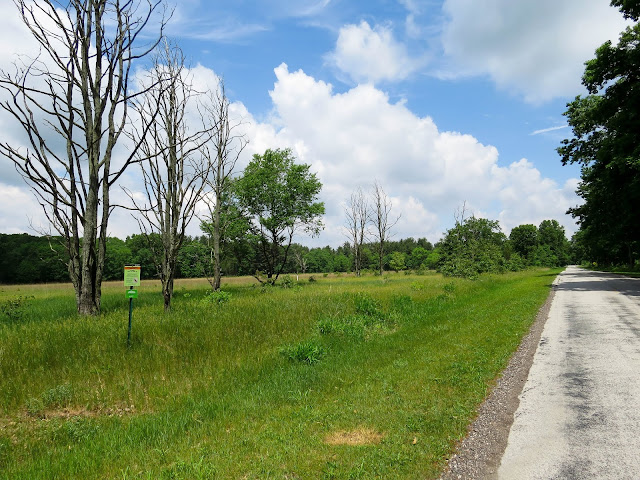 |
| Oak Openings Preserve |
We stayed in a total of 4 different hotels during the trip – the excellent Hampton Inn Detroit/Southgate was by far the best of the bunch, while our Super 8 and Baymont in Grayling and Gaylord respectively both did what they said on the tin. Birch Lodge & Motel at Trout Lake was a little more old fashioned (with an abundance of mosquitos hijacking the room) although the lakeside setting was incredibly peaceful, and with accommodation in that area hard to come by this was the best pick of a very limited selection. Food selection, surprisingly for America was not particularly great, and we were thankful for the local Pizza Huts on more than one occasion. As ever, Applebees proved to be a reliable and tasty option, but overall, the standard of eateries during the trip left much to be desired.
Daily Diary
Our first day in Michigan dawned hot, bright and sunny (much warmer than usual for the time of year) and hitting the road we were on site at Magee Marsh by early morning, just as migrant activity was starting to peak. Situated just over the border in Ohio and around an hours drive from our base in Detroit, Magee Marsh is famous the world over as a stopover point for migrants on their long journey north and as such is a key location for any trip in this part of America.
 |
| A mind-boggling array of colourful American Warblers awaits |
Before we had even approached the car park, the birds were materialising thick and fast, the bright sunshine yellow of a male Prothonotary Warbler popping out at us from the hedgeline while an abundance of Yellow Warblers called all around. A pair of Yellow-billed Cuckoos dashed through the thicket of marshy trees in hot pursuit of one another, while a cacophony of Red-winged Blackbirds trilled noisily from the reeds in every direction.
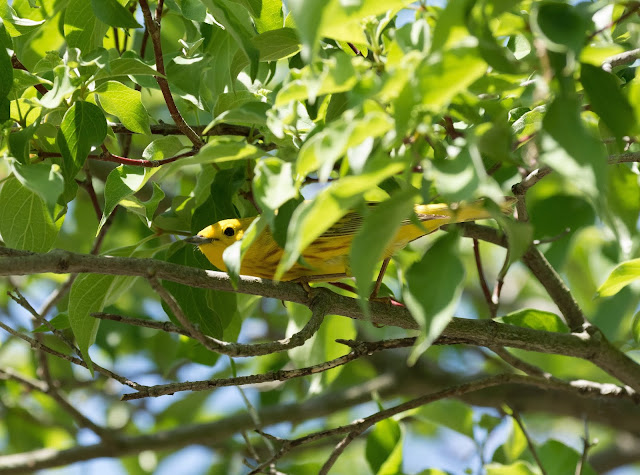 |
| Yellow Warbler |
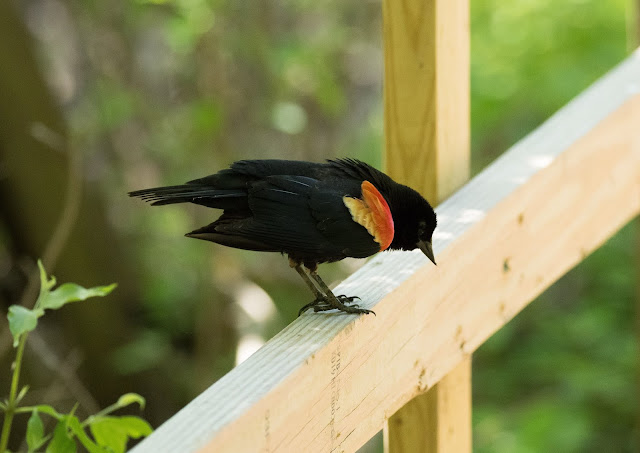 |
| Red-winged Blackbird |
Arriving in the car park and approaching the famous boardwalk from the eastern side, surprisingly the birds seemed to slow down a little, far from the abundance of colourful warblers that we had envisaged would be surrounding us. A smart Swainson’s Thrush on the boardwalk was our only one of the trip, while the only species at this side of the marsh in any abundance were the many Yellow Warblers calling from every branch.
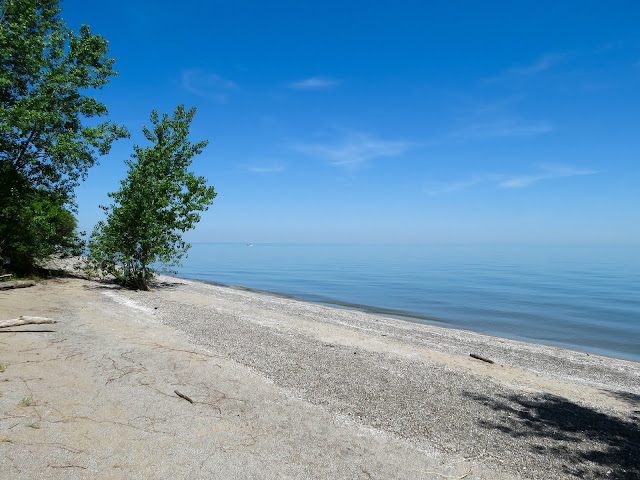 |
| The adjoining Lake Erie |
With very little action on the eastern portion of the marsh we headed over to the western end to see if our luck could improve, and finding a small cluster of birds it soon became apparent that this area was much more productive. Two House Wrens were busy holding territory alongside a skulky Grey Catbird, while singles of Canada Warbler, American Redstart, Yellowthroat and another Prothonotary Warbler flitted through the tree canopy in quick succession. Two Blackpoll Warblers busied themselves amongst the leaves alongside a female Magnolia Warbler, while exploring the watchtower a little way along the path revealed our first Blackburnian Warbler of the trip (a personal favourite of mine), although this was a slightly duller female, lacking the fiery burning glow only the males exude.
 |
| Grey Catbird |
The chiming of Cedar Waxwings overhead revealed a small flock of around 20 birds blending in to the branches above, while the flutey notes of several singing male Baltimore Orioles carried through the trees.
 |
| Red-eyed Vireo |
 |
| Warbling Vireo |
Regardless of the increase in activity at this side of the marsh, we had still yet to score on any of our targets however. Despite an abundance of both Red-eyed and Warbling Vireos, the lemon buff of a Philadelphia Vireo eluded us all day, and so far there was no sign of either the Wilson’s, Mourning or Connecticut Warblers that had been reported a few days prior. Our luck eventually changed as a cryptically camouflaged American Woodcock foraging in the undergrowth became our first new bird of the day – a species we weren’t entirely sure we would catch up with on our trip, watching on as it continued to probe unfazed in the soft ground just metres away.
 |
| American Woodcock - a slightly scruffy individual! |
Tearing ourselves away and armed with new information from some of the local birders, we explored one of the loop trails of the boardwalk where the Wilson’s Warbler had previously been seen. Eventually, after an abundance of Yellow Warblers, one individual had the sooty black cap of a Wilson’s, perched on one of the gnarly branches for a matter of seconds before disappearing in to the marshy thicket. Despite our best efforts we just couldn’t relocate it, and with lunchtime approaching we cut our losses and headed back to the car for a bite to eat and to try and locate some of the Trumpeter Swans that make the area their home.
 |
| Bald Eagles nest in the trees above the main car park at Magee Marsh |
With none present on the large lake next to the visitor centre, we decided to check another of the large waterbodies we had passed on our way down – Ottawa National Wildlife Refuge. The small lake next to the road was teeming with waterbirds, as Wood Ducks, Blue-winged Teals and Canada Geese all drifted on the water’s surface, while Egrets, Great Blue and Green Herons stalked stealthily amongst the lily pads. Thankfully though, the white figures of two Trumpeter Swans soon came in to view, dabbling for morsels amongst the vegetation and displaying their large, dark black wedge shaped bills.
 |
| Ottawa National Wildlife Refuge |
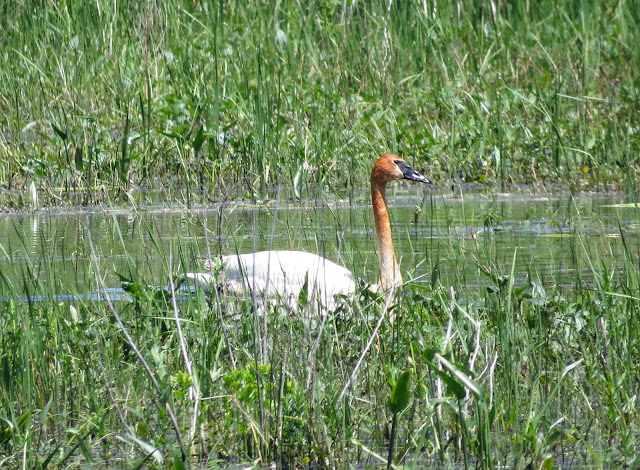 |
| Trumpeter Swan |
 |
| Wild Canada Geese! |
With Trumpeter Swan now safely in the bag but with the afternoon still left ahead of us, we decided to head back to Magee Marsh for another crack at trying to get a photo of the Wilson’s Warbler. Unfortunately, they proved to be incredibly elusive and impossible to photograph once more as they flited amongst the tangle of branches, and a few glimpses was all we could muster.
Another much more skulking warbler soon caught our eye as we approached the car park, creeping along the water’s edge amongst the mossy trunks as it unobtrusively foraged at our feet. Analysing our photos and assessing the behaviour in the field we eventually had it nailed down as a female Mourning Warbler, a decent bird for the site and in reality our only individual of the trip.
 |
| Female Mourning Warbler - a sooty all grey head and throat led us to rule out Nashville and Connecticut |
Experiencing mixed levels of success on our first day, whilst we had seen good numbers and quantities of birds, only four of these were new species, and a lot of the birds we had seen hadn’t proved to be particularly photogenic, which I in particular found somewhat frustrating. Heading back to Detroit a tad disheartened, some Red Lobster chicken and mozzarella bread hit the spot after a long day in the field, with our hopes higher for a more successful day tomorrow.

























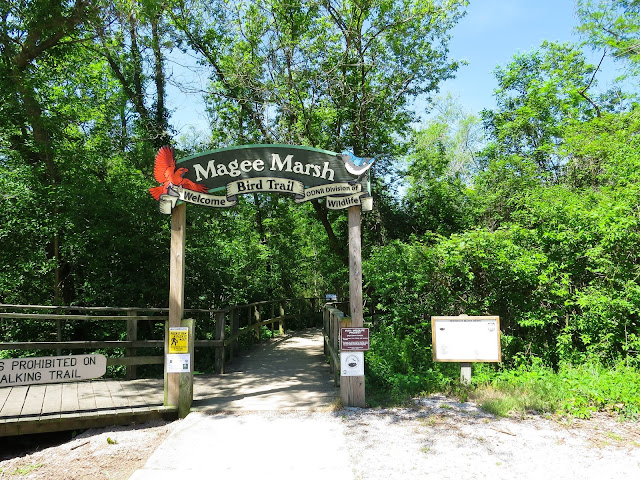



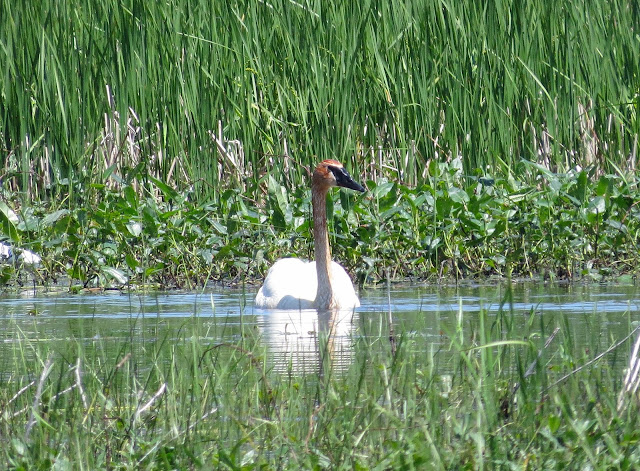




No comments:
Post a Comment